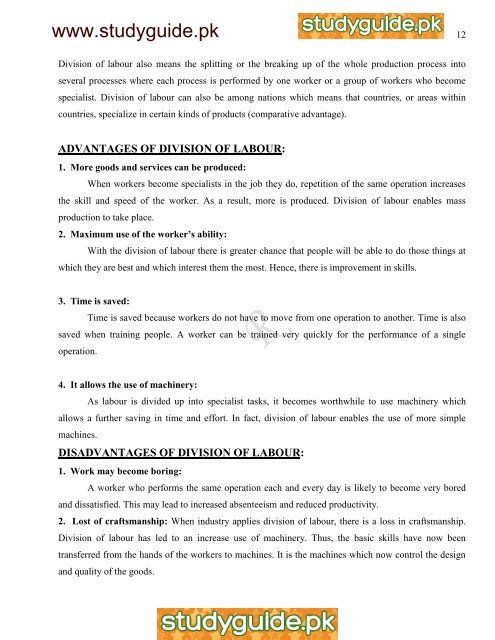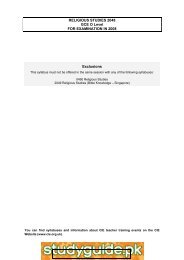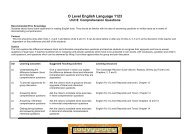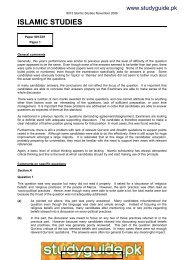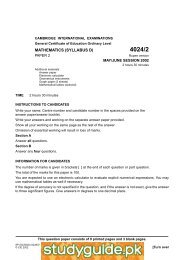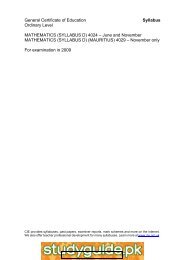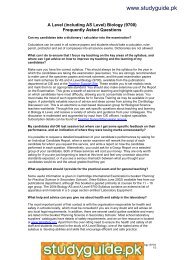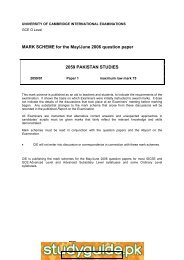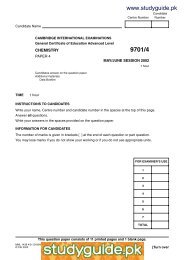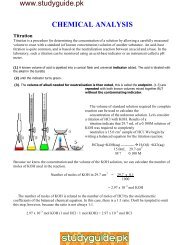1. BASIC ECONOMIC IDEAS..pdf - StudyGuide.PK
1. BASIC ECONOMIC IDEAS..pdf - StudyGuide.PK
1. BASIC ECONOMIC IDEAS..pdf - StudyGuide.PK
Create successful ePaper yourself
Turn your PDF publications into a flip-book with our unique Google optimized e-Paper software.
www.studyguide.pk12Division of labour also means the splitting or the breaking up of the whole production process intoseveral processes where each process is performed by one worker or a group of workers who becomespecialist. Division of labour can also be among nations which means that countries, or areas withincountries, specialize in certain kinds of products (comparative advantage).ADVANTAGES OF DIVISION OF LABOUR:<strong>1.</strong> More goods and services can be produced:When workers become specialists in the job they do, repetition of the same operation increasesthe skill and speed of the worker. As a result, more is produced. Division of labour enables massproduction to take place.2. Maximum use of the worker’s ability:With the division of labour there is greater chance that people will be able to do those things atwhich they are best and which interest them the most. Hence, there is improvement in skills.3. Time is saved:Time is saved because workers do not have to move from one operation to another. Time is alsosaved when training people. A worker can be trained very quickly for the performance of a singleoperation.4. It allows the use of machinery:As labour is divided up into specialist tasks, it becomes worthwhile to use machinery whichallows a further saving in time and effort. In fact, division of labour enables the use of more simplemachines.DISADVANTAGES OF DIVISION OF LABOUR:<strong>1.</strong> Work may become boring:A worker who performs the same operation each and every day is likely to become very boredand dissatisfied. This may lead to increased absenteeism and reduced productivity.2. Lost of craftsmanship: When industry applies division of labour, there is a loss in craftsmanship.Division of labour has led to an increase use of machinery. Thus, the basic skills have now beentransferred from the hands of the workers to machines. It is the machines which now control the designand quality of the goods.


